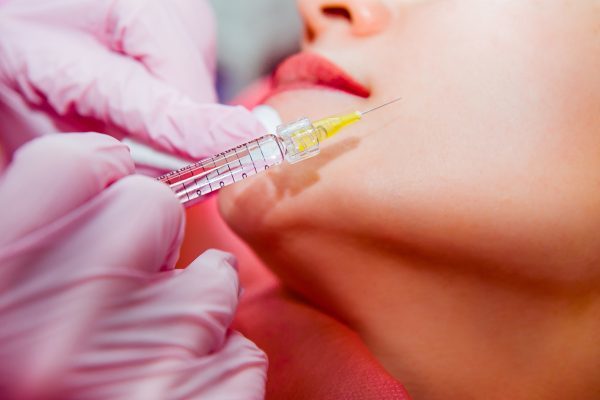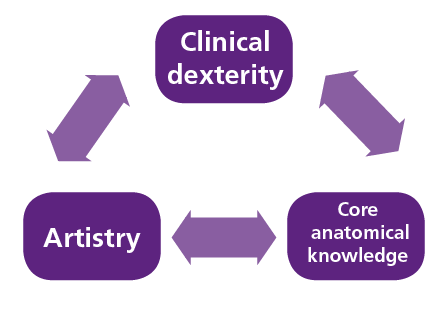 Uma Jeyanathan draws on her own experience as a dental surgeon practising facial aesthetics to provide advice for dentists thinking of doing the same
Uma Jeyanathan draws on her own experience as a dental surgeon practising facial aesthetics to provide advice for dentists thinking of doing the same
Facial aesthetic treatments and skin care have seen significant development and technological advancement in recent years, so it is understandable the interest and popularity has concurrently increased.
Dental surgeons are well positioned to administer facial aesthetic treatments, with in-depth anatomical knowledge and clinical surgical exposure to orofacial structures. Therefore, extending their repertoire into this important field would seem a natural progression for some dental clinicians.
There are now a significant number of dentists that are motivated and dedicated to have undertaken specialised training and development to offer facial aesthetics. But what attracts our profession to this diverse and fulfilling speciality?
The opportunity to expand on key underpinning knowledge, as well as developing a new skill set, makes aesthetic work most endearing to some dental surgeons. Facial aesthetics and skin care procedures are elective treatments; thus, patients have the opportunity to carefully seek out an appropriately experienced and passionate practitioner.
Furthermore, unlike a proportion of patients who require dental intervention and care, often the person seeking aesthetic services has a different outlook. I usually find that this is a combination of excitement and positivity. This is a very different mindset to the patients that view dental treatments negatively, or may even have a historical fear of the dentist.
Financial implications and gains will be at the forefront of many clinicians’ thoughts when looking to expand into this area. Clinicians should appreciate certain costs, including training, indemnity, good quality products, marketing and reviews, ‘top up’ treatments free of charge, and most importantly, the time and dedication taken to achieve wonderful results.
Why would a dentist be good at facial aesthetics?
As dentists, our clinical knowledge of the facial region is outstanding. We look at soft tissues, skeletal patterns, and facial profile, and integrate this to a foundation of key anatomical knowledge. This all goes into the process of treatment planning for the face.
When learning the new skills in facial aesthetic care, dentists often find the development and integration easier than other healthcare professionals. In addition to the core knowledge base, dentists inherently use their hands for meticulous work on a daily basis.
Allied skills such as injecting and using fine instruments are integrally built into the dentist’s muscle memory. This is an essential skill when injecting toxins and dermal fillers, allowing for precision and accuracy, with the development of an artistic flair.
As clinicians adhere to high standards of safety, cross-infection and governance, the clinical professionalism we directly transfer from our dental practice to facial aesthetics allows further for excellence in quality care. There is a unique triad that dentists offer in aesthetic care:

Successful implementation
Many dentists have often, through curiosity and continuous professional development, completed injectable toxin and filler courses and have thus acquired the initial skills in their armamentarium. This author has an inherent passion regarding skincare and facial aesthetics and has invested a great amount of care ensuring it blends into dental practise.
If you want to spend the majority of your clinical time treating the face, then an appreciation of the competition in the industry must be understood. This is surprisingly not only from other doctors, dentists or nurses. A significant proportion of facial treatment is still delivered by a cohort with no regulatory body. As clinicians, we must always aspire to provide exceptional results and truly believe in the arena.
First and foremost, we are clinicians, and the skin care and facial aesthetics we perform is part of our clinical medical profession. Thus, treating this area of our speciality as an extension of our clinical work only provides a robust, professional delivery of medical care.
During a patient focus group I carried out for market research, it was very apparent that trust and confidence was enormously increased due to the confidence placed in the dental surgeon’s clinical background and the clinical environment they were treated in.
Hence, we have no need to compete with the unregulated cohort in the industry. By utilising what we have as medical professionals, such as our robust regulatory and validation prerequisites like GDC number, CQC-regulated practice, incorporated policies, and medical emergency equipment on site, we provide a far safer and superior treatment care package.
Another regulating body, which is at the forefront of ensuring that the industry is safe, furthermore strongly supports dentists, is Save Face. Having a government-approved register, which stringently examines your clinic and you as a clinician, gives patients the peace of mind they need in order to make an informed comfortable decision over cosmetic treatments.
The concept works well for marketing too, as patients can leave reviews and learn more about the clinic and procedures. Organisations such as Save Face are a good start for profiling your clinic as an aesthetic hub and launching it in a safe and reputable way.
The right staff, the right patient
The main hurdle within a dental practice is to make the facial aesthetics and skin care area of practice understood amongst all staff members. The in-depth appreciation and ‘buy-in’ from staff members allows patients to both realise it is available in their dental practice, but also to build a seamless fluid transfer of clinical professionalism between dental surgery and facial aesthetics.
Your own dental patients may be interested in understanding and undertaking facial aesthetics, but may not know that the service exists in their dental practice. Having before and after photo books and a product stand will stir the curiosity of patients who will seek answers to questions. Hence, it is important that your front of house team members are able to answer these initial inquiries with gentle, welcoming kindness, before booking and referring them to the dentist.
The easiest way for staff members to gain an understanding of the treatments is to perform the facial aesthetic treatments on them – with their consent of course. Once they believe in you and the treatments, they will be your biggest endorsing assets. The idea is not to educate all personnel with a deep understanding of the intricate details on the procedures, but to enable team members with positive experiences and outcomes to then confidently guide a future patient towards a consultation.
My aim is to provide natural aesthetics with a holistic approach; the focus is on skin vibrancy and radiance with gentle intervention. I have experienced these treatments, and thus can speak from experience when describing procedures, as well as empathise with particular anxieties or events.
Love what you do
The facial aesthetics industry is fascinating – both growing and moving at a rapid rate. If you truly are passionate about the field of aesthetics, the progressive nature will keep you continuously interested. Know each patient sincerely, learn the basics well, understand your anatomy and ensure each case is treatment planned well and reviewed diligently.
Practice is the key to mastering any clinical procedure, so the more you do the more you will progress. Being committed to growing this aspect of the practice and giving yourself a new patient target each week will aid progression.
In conclusion, our dental cadre are fortunate to have a robust knowledge base and a number of core clinical, professional, governance, and assurance skills, which provide an excellent foundation to incorporate facial aesthetic practice.
Although there are administrative and business hurdles to overcome, a multifaceted approach on careful planning, checklists, staff and infrastructure development, along with a good permanent dose of positive, personal energy towards skin care and aesthetics will integrate our dental practice to thrive further.
This article was originally published in the August 2017 issue of Aesthetic Dentistry Today. Read more articles like this in Aesthetic Dentistry Today and gain three hours’ verifiable CPD with every issue. Click here to subscribe or call 01923 851 777. Get in touch via Twitter @AesDenToday.


